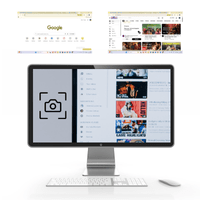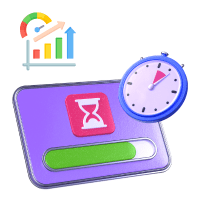
Most managers find a way to motivate their employees and they are looking at how to motivate employees as a manager without spending money. There are several ways to motivate employees as a manager and this article will briefly go over some of the top ideas to motivate employees as managers and best practices. These motivational techniques can be used to bring out the best in all your employees, except, of course, for those who don’t possess the necessary skills or are just bored to work. How Motivated employee is best for your organization
Role of Manager in Motivating Employees
Motivating your employees is one of the most important things you can do to keep a team running smoothly. If you are a manager, you need to understand how to motivate employees as a manager. It’s important to understand how motivation works. You can’t motivate team members if you don’t know what motivates them in the first place.
A team is The most important asset and the biggest resource for any organization. The business cannot function without them and this is where people management skills become essential. Steering the team in the right direction to achieve desirable goals goes beyond productivity monitoring and tracking their daily inputs.
If there is any hesitation in answering these, there is a problem. Often, organizations need better people management to achieve their objectives. Situations become complicated when the workforce largely comprises remote workers, freelancers, independent vendors, and less in-office attendance, that is, a hybrid team.
Tips on How Can a Manager Motivate Employees:
When it comes to motivating employees to do more work, there are many methods of motivating employees in an organization. However, if an organization has a team of people and managers don’t know exactly how to motivate them, then it can be quite frustrating.
1. Give Perks and Privileges
Culture trumps money, any day. A healthy work culture that appreciates and validates the contribution of its team within the organization is a great motivator. There are endless ways for organizations to show appreciation by assigning various perks and privileges.
It is not always about time-tracking, performance, and productivity monitoring. Factors like praising teams, celebrating wins, showing empathy, surprise workday offs, promoting health and wellness, and flexible work schedules make any team feel cherished & motivate employees to work harder.
2. Avoid Micromanaging
Productivity is next to impossible if team managers attempt to manage work with a zoomed lens. Not knowing how to delegate efficiently leads to micromanaging and that often leads to disastrous results. Use the employee monitoring software to list and assign tasks, and give the team freedom to follow through with accountability and transparency. This practice will motivate employees to perform better & make them happy.
Set clear expectations, let go of perfectionism, hire the right team, and better still, encourage open communication and ask for feedback from the team on how they prefer to be managed.
3. Career Mobility and Opportunity Options
Career mobility implies the movement of team members across grades and positions. Encourage internal mobility within the organization. Creating opportunities for team members to move around the organization is a motivating incentive for performance.
Before external hiring, explore if someone from within the team is a right fit. You can also retain talent by implementing a career mobility program.
4. Remove Blame Culture
Pitting team members against each other creates a blame culture, which dampens productivity, breaks down the social structure of the workplace, removes trust, and derails the organization’s overall objective.
The antidote to an existing blame culture is to empower team members through accountability, and the best way is to lead by example. When the leaders/managers accept their mistakes, they set an example by confidently taking ownership of failures. Blame culture exists because people fear being reprimanded. Managers need to create a happy environment, where all employees trust each other & work as a team. This can be done by motivating employees to achieve goals.
5. Performance-Related Bonus
Performance-based pay is compensation tied to the contribution of a team member within the organization. It is a great motivator and keeps up the spirit of competition. Implement it in a hybrid workspace by announcing half-yearly or yearly performance bonuses and productivity monitoring using employee time tracking software. It helps to improve focus, morale, and performance in the workplace by motivating employees to achieve goals.
6. Better Base Pay
The role of money in motivation has been the subject of extensive research. In a 2004 study published by The University of Tennessee at Martin, base pay ranked second in employee performance motivator.
The reason is purely psychological: a performance-oriented bonus is a different matter but a low base pay scale paves the way for demotivation. An average permanent team member works around 50 to 60 hours per week, and it’s logical to expect a decent wage for the hours spent for the organization.
7. Ask for Feedback to Improve the Organization
Organizations thrive on professional relationships, and the strongest relationships are built on effective communication. This communication cannot be one-sided, that is, from the management to the team members only.
It is worthwhile to encourage team members to share feedback about how the organization is doing and how it can improve to form a better work culture and retain talent. Feedback can be anonymous.
If an organization is using employee monitoring software, it can initiate anonymous polls, invite teams to share improvement and management tips, how the operational processes can be mobilized in a better way, and so on. It makes team members feel that they are an intrinsic part of the organization; and that they are not just trading time for money.
8. Team-Centric Communication Ecosystem
Strong channels of internal communication within an organization are a necessity when it comes to driving and improving team motivation. Organizations need not be only customer-centric; it has to be employee-centric too as they are the backbone of the business. Encourage transparent and honest communication without the fear of being reprimanded.
It has a significant impact on team experience, motivation, engagement, and the overall business. Use employee productivity monitoring software that offers internal team communication as a feature. Not only does it build accountability and responsibility, but it also gives teams a voice to share their opinions and feedback.
9. Recognize a Job Well Done
Effective productivity monitoring gives a clear snapshot of how team members are performing. Use the employee monitoring software to encourage a leaderboard-style gamified performance scoring system where performance achievers are felicitated with perks and bonuses. The management can give them a shout-out on company socials and encourage them to host monthly workshops where they share their experiences and motivate other team members.
Conclusion
Team motivation and engagement are a work in progress. There is no single manual to follow. Every organization needs to deep dive into what works for them and inculcate certain practices toward creating an efficient work culture.








